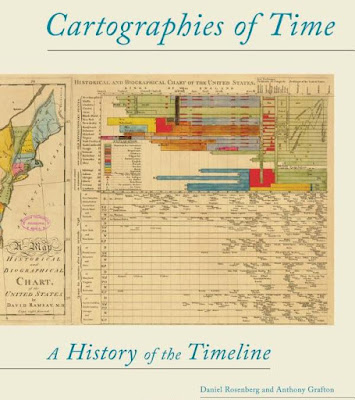Some possible translations of the German
ungleichzeitigkeit include:
not-happening-synchronously-ness
asynchronicity
nonsynchronism
temporal disphasure
historical misalignment
temporal asymmetry
According to the
article in the German version of Wikipedia – here freely translated – ‘Ungleichzeitigkeit is a term coined by the philosopher Ernst Bloch in
Heritage of our Times (Zurich, 1935) which in the social sciences and history is associated with classical modernism of the 19th and 20th Century.’
In that book, Bloch begins the chapter translated by Ritter as
Nonsynchronism and the Obligation to Its Dialectics with the statement ‘Not all people exist in the same Now.’ From a political stance, he identifies the way in which groups in society belong to cultural clusters which do not share a single zeitgeist.
The term has been adopted by some to denote the more general sense of an apparent misalignment of events belonging to contemporaneous cultural groups. For example in
In Search of a Nineteenth Century, Jürgen Osterhammel of the University of Konstanz refers to ‘minor and major, personal and structural survivals and Ungleichzeitigkeiten, made visible by historical cross-sectioning.’ At this point I hope the relevance to chronographics – and especially synchronographics, which aim to show synchronous events across cultures, countries and categories – becomes clear. Osterhammel suggests that ‘Cutting through the tissue of history at any given time allows startling insights into the much-quoted “simultaneity of the nonsimultaneous”.’
Osterhammel gives as an example his investigation of the year 1837 (‘Year One of the Victorian Age’) in which he found Samuel Morse taking out a patent on the telegraph while at the same time Lorenzo da Ponte, Mozart’s librettist, was still alive and well and living in New York. Remarkably, Osterhammel does not note that there is a portrait which encapsulates this particular
ungleichzeitigkeit, a painting
of da Ponte,
by Morse - who was more an artist than he was an inventor, with a self-appointed mission to introduce European culture to the States (see Gere 2006: Chapter 2). The existence of the painting is noted in Susan W. Bowen’s review of a book by Rodney Bolt published in 2006, and earlier in an article in 2000 by Jeremy Sams in the Independent newspaper.
The painting was first brought to my attention by the artist Nat Goodden when he was a postgraduate student at the Lansdown Centre in 1993-95. He showed me a photocopy of the portrait and asked me what it was – I was astonished. Nat has continued to pursue these themes, including in a prototype website to explore such cross-connections:
http://culturalcartography.net/what. There he writes ‘what took my breath away was to realise that this early pioneer of the digital age had crossed paths with the man who wrote the words for The Marriage of Figaro, Don Giovanni, and Cosí Fan Tutte: I’d have thought of them as belonging to two entirely different times, places and cultural milieux.‘ I believe I can trace my own obsession with chronographics to that conversation – thank you, Nat.
References
Bowen, Susan W. 2006.
Anathema of Venice: Lorenzo Da Ponte: Mozart’s American Librettist a review of Bolt, Rodney. 2006. The Librettist of Venice; The Remarkable Life of Lorenzo Da Ponte; Mozart’s Poet, Casanova’s Friend, and Italian Opera’s Impresario in America.
Bloch, Ernst. 1977. (trans. Mark Ritter) Nonsynchronism and the Obligation to Its Dialectics.
New German Critique 11 (Spring, 1977). 22-38. Available as a
PDF file (400K).
Gere, Charlie. 2006.
Art, Time and Technology. Berg, Oxford.
Heartz, Daniel. 1995. Mozart and Da Ponte.
The Musical Quarterly 79(4) (Winter, 1995). 700-718. Available through JSTOR: subscription required.
Osterhammel, Jürgen. 2002. In Search of a Nineteenth Century.
Sixteenth Annual Lecture of the German Historical Institute, 14 November 2002. Available as a
PDF file (112K).
Sams, Jeremy. Lorenzo the magnificent.
The Independent. Tuesday 16 May 2000.


